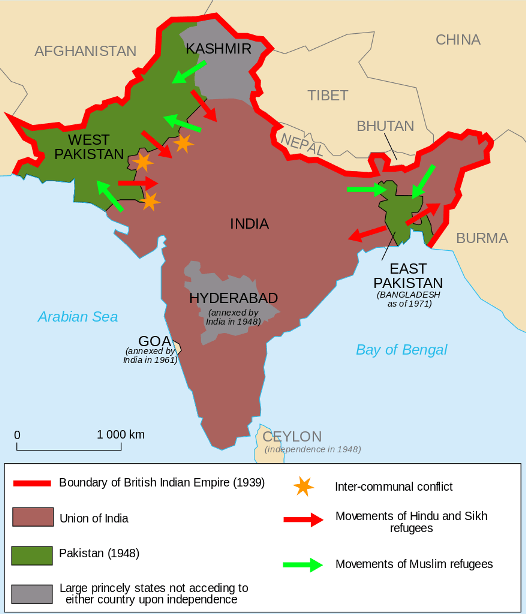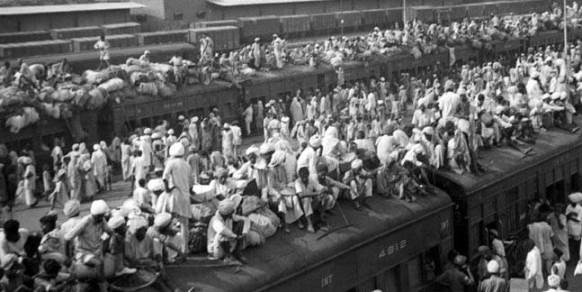Partition and its aftermath
- Freedom came with Partition which resulted in large scale communal violence & riots
- In initial few years of independence India faced daunting challenges concerning national unity & territorial integrity

Kind of challenges
- To shape a nation uniting all the states with diversified culture, languages & religions into one nation
- To establish democracy & to develop democratic practices in accordance with the constitution
- to evolve effective polices for economic development and eradication of poverty
- Most of irrigated land gone in partition – Food security to feed those hungry mouths
- To provide shelter & food for refugees from Pakistan
Partition: Displacement and Rehabilitation
On 14–15 August 1947, two nation states came into existence – India & Pakistan; due to “two nation theory” advanced by Muslim League. After 3rd June plan of Mountbatten a British jurist Radcliff was invited to fix the problem and to form two boundary commissions one for Bengal and one for Punjab. On 17th August, 1947 he announced his award.
Limitation of this award
- Justice Radcliff had no prior knowledge about India.
- He had no specialized knowledge needed for the task also.
- He had no advisors and experts.
- 6 week deadline that Radcliff had was also a limitation of this award.
Consequence of Partition
- Most abrupt, violent and haphazard, tragic transfer of people in human history
- Brutal killings, atrocities, rapes, on both sides of the border
- Cities like Lahore, Amritsar, Calcutta got divided into “Communal Zones”
- Women were killed by their own family members to preserve the ‘family honor’
- Partition forced about 80 lakhs people to migrate across the new borders
- 5 to 10 lakh people were killed in Partition related violence
The broad strategy for national consolidation after 1947 involved
- Territorial integration
- Mobilization of political and institutional resources
- Economic development
- Adoption of polices to maintain law & order & to promote social justice
Indian Government Measures
- Department of rehabilitation was created to Rehabilitate nearly 6 million refugees from Pakistan
- A massive migration had also taken place the other way, into Pakistan from India. Thus, first place to resettle the refugees was on land vacated by Muslims in the eastern part of the Punjab, which resulted in shortfall of approx. 8 million hectares of land in Punjab.
- This shortfall was made more acute by the fact that the areas in west of the province had richer soils, & were more abundantly irrigated.
- Each family of refugee farmers was given 4 hectares, regardless of its holding in Pakistan.
- Loans were advanced to buy seed & equipment. While cultivation commenced on these temporary plots, applications were invited for permanent allotments.
- Every false claim was punished, sometimes by a reduction in the land allotted, or in extreme cases by a brief spell of imprisonment; then also officials estimated an overall inflation of about 25 per cent.
- To collect, collate, verify & act upon the claims a Rehabilitation Secretariat was set up in Jullundur headed by Sardar Tarlok Singh of Indian Civil Service.
- By 1951, the problem of the rehabilitation of Refuges from West Pakistan had been fully tackled.
The rehabilitation on East took years and it was more difficult because of constant exodus of Hindus from East Bengal continued for years.



No comments:
Post a Comment